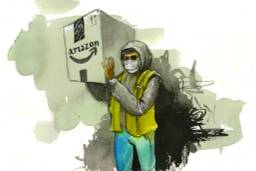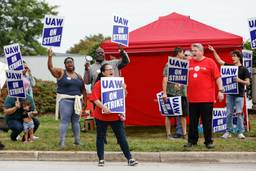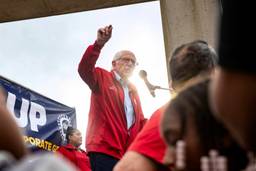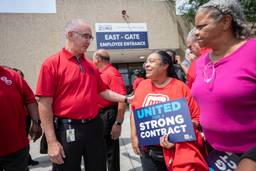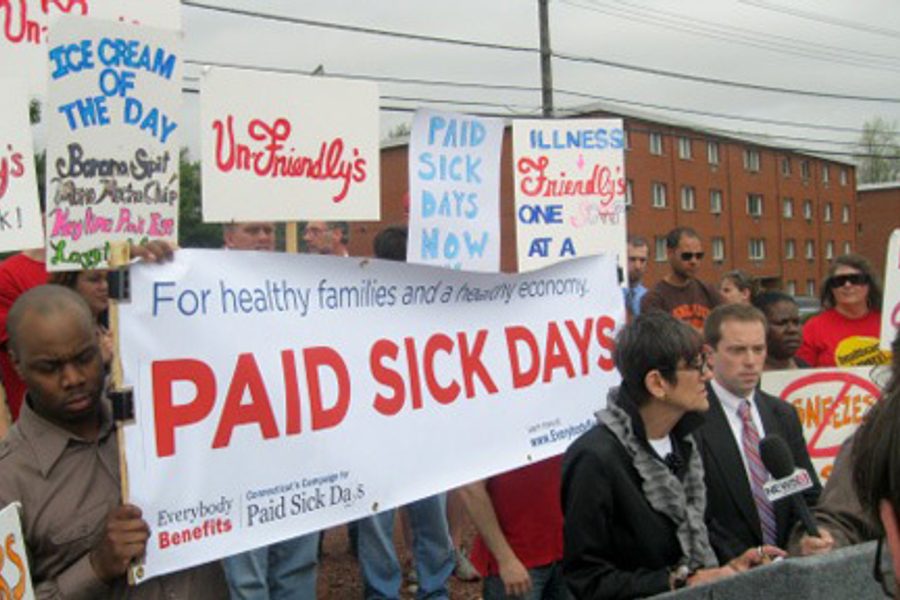
The economic horizon is looking pretty grim for people in Connecticut these days. The state is poised to bump up unemployment with a few thousand additional layoffs. Increasingly desperate unions are fighting a war of attrition against politicians who’ve refused the painful concessions so far offered up. And yet in the past few days, a gap opened in the clouds and Connecticut pioneered an unprecedented paid leave law.
The law, just signed by Governor Daniel Malloy, enables hundreds of thousands of workers to take time off to deal with medical issues, both for themselves or for a child or spouse, without losing pay.
Under the law, which will affect about 200,000 to 400,000 workers statewide, reports the New York Times, a worker will earn paid sick time depending on how many hours they clock, up to five days per year. The measure targets service-sector workers like “waiters, cashiers, fast-food cooks, hair stylists, security guards and nursing home aides.”
Though it’s a watershed for a nationwide movement to enact paid leave legislation state by state, the legislation was hacked down from a broader proposal and even then only narrowly passed in the Senate. It exempts manufacturing workers and day laborers, leaving out a big swath of the blue-collar workforce. Businesses with fewer than 50 employees are also exempt. And no guaranteed paid sick leave for “independent contractors,” presumably because they’re “independent” enough to negotiate time off individually. (Sure, tell that to the uninsured jazz musicians and overworked truck drivers who’ve fallen into this oft-abused legal category.)
Nonetheless, the legislation marks a rare triumph of reason over big business. According to the National Partnership for Women and Families:
nearly 40 percent of private-sector workers lack even a single paid sick day. And an additional 4.2 million are too new to their jobs to be eligible for paid sick days through their employers. Only 19 percent of workers in the lowest tenth of wage earners have paid sick days.
Advocates are hopeful that Connecticut, which faces the same economic predicaments as other states, reflects a changing landscape for paid leave policies across the country. “Connecticut’s workforce represents the American workforce,” said Vicki Shabo, director of work and family programs at the National Partnership for Women & Families for the National Partnership. “Throughout the country, we see the same patterns in access to paid sick days, with low-wage workers in particular being denied this basic workplace protection.”*
Paid sick days are a significant safeguard for working women. In businesses with fifteen or more employees, nearly forty percent of female workers have to give up a day’s earnings to stay home to nurse a child or see a doctor. The tension between health and income is especially acute for black and Latino moms, who are more economically vulnerable in general.
The fact that such a common-sense policy is lacking in most states illustrates how heavily corporations have invested in fear-mongering. Lobbyists generally stop short of saying outright that punishing employees who fall ill is good for business. Instead, they warn of the supposed financial burden of letting sick workers stay home, suggesting that mandatory paid leave would “kill jobs.”
As we’ve reported before, empirical evidence shows that mandatory paid time off does not pose an excessive cost on employers, and that the expense is more than offset by the benefits of having a healthier, happier, probably more productive and dedicated employees. (Not to mention less likely to sneeze on the food at a restaurant or pass out at their desk.)
As for fears that workers will use their sick days to slack off, research indicates workers with access to the benefit take just one more day off than other workers without paid leave, on average, and that half don’t take days off at all. In other words, bosses’ distrust of workers is self-defeating: the risk of “abuse” of sick leave seems to be exponentially smaller than the risk of hurting their business by breeding poor health and resentment among their staff, both of which add up to a harmful contagion known as “presenteeism.”
The rest of the industrialized world is relatively enlightened. As David Moberg reported, throughout the industrialized world, the U.S. stands alone in the lack of mandatory paid sick days, along with similarly ungenerous policies on vacation time. Workers in 136 other countries enjoy a week to a month off to tend to medical issues without losing pay. A graphical breakdown in Mother Jones reveals other brutal forms of American exceptionalism: while women in Western Europe enjoy guaranteed paid maternity leave of at least several weeks, a typical mom here might be getting ready to return to the office the minute she checks out of the maternity ward.
Prospects for national legislation for mandatory paid sick leave are bleak in this Congress. But states like California and cities Washington D.C. and San Francisco have made strides with various paid leave laws. A follow-up study on San Francisco concluded that the policy regulation was far less painful than some businesses originally feared, and local job growth has actually been positive in recent years.
Clearly, paid sick leave isn’t a cure-all. It doesn’t make a difference to Americans who don’t have jobs, it won’t relieve the sting of public sector cutbacks in Connecticut, it won’t remedy a broken healthcare system or the multiple barriers mothers face in the workplace. But from an economic and an ethical standpoint, there’s no rational argument against mandatory paid sick days. So even when workers are under attack from all sides, occasionally, a little bit of reason shines through.
*The attribution of the quote from the National Partnership has been corrected to the director of work and family programs.

I hope you found this article important. Before you leave, I want to ask you to consider supporting our work with a donation. In These Times needs readers like you to help sustain our mission. We don’t depend on—or want—corporate advertising or deep-pocketed billionaires to fund our journalism. We’re supported by you, the reader, so we can focus on covering the issues that matter most to the progressive movement without fear or compromise.
Our work isn’t hidden behind a paywall because of people like you who support our journalism. We want to keep it that way. If you value the work we do and the movements we cover, please consider donating to In These Times.
Michelle Chen is a contributing writer at In These Times and The Nation, a contributing editor at Dissent and a co-producer of the “Belabored” podcast. She studies history at the CUNY Graduate Center. She tweets at @meeshellchen.



